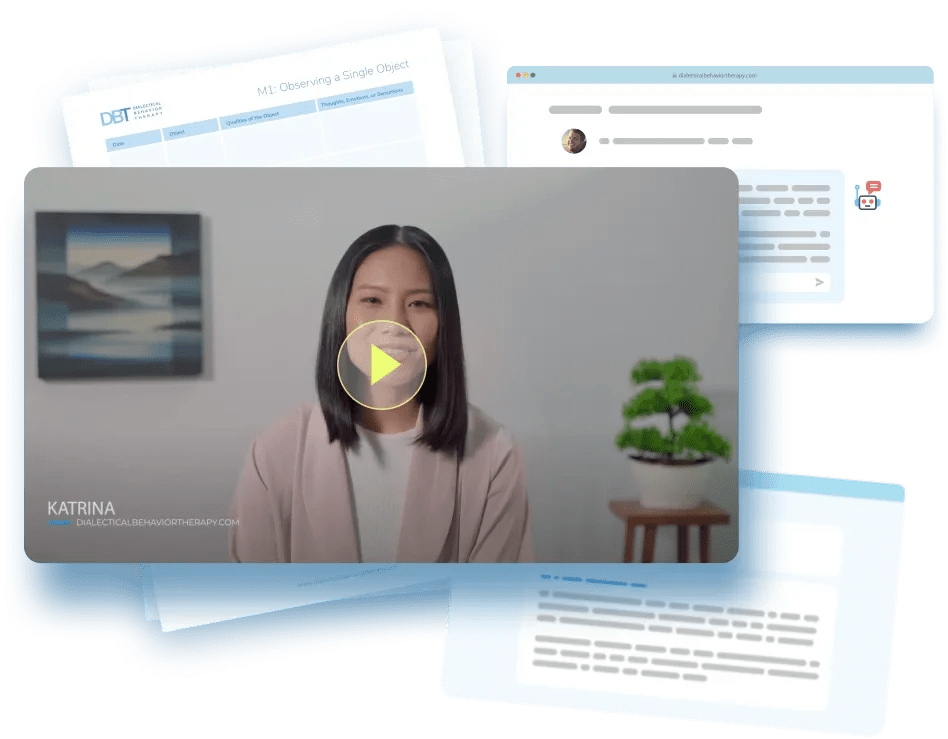WM1: Bull's Eye
Virtual Coach
Work step-by-step through the Know What Matters exercise with the virtual coach.
Introduction
Knowing what matters is half the game—how closely you’re living it is the other half. Bull’s Eye (developed by Swedish ACT researchers Lundgren, Luoma & Hayes) turns values into a dartboard: the center is “living fully by this value,” the outer ring is “far off target.” By plotting an X in four life domains you get an instant snapshot of alignment—and a clear visual for tracking change over time.
Instructions
Bull’s Eye — Guided Practice
Goal: Complete one Bull’s Eye today, then repeat monthly to monitor progress.
Steps
-
Print or Draw Dartboard
- What it means: Use a four-quadrant target (download link or hand-draw concentric circles).
- Concrete example (“Value: Growth at Work”): Center = bull’s-eye; outer ring = edge.
- Quick tip: Thicker lines make X-marks easier to see.
-
Label Domains
- What it means: Top-Left: Work/Education • Top-Right: Relationships • Bottom-Left: Health/Personal Growth • Bottom-Right: Leisure & Play.
- Concrete example: Write headings in each quadrant.
- Quick tip: Rename domains to fit your life (e.g., “Parenting”).
-
Clarify Each Value
- What it means: Spend 30 sec writing one sentence: “In this area I value ____.”
- Concrete example: “At work I value learning & contribution.”
- Quick tip: Keep wording inspiring but concrete.
-
Mark Current Position
- What it means: For each quadrant, place an X where you honestly stand today: center = living values, edge = off-track.
- Concrete example: Work X lands halfway to center—doing okay but could engage more.
- Quick tip: Quick gut placement beats overthinking.
-
Reflect on Gaps
- What it means: Note which Xs sit farthest from bull’s-eye; jot why and feelings that arise.
- Concrete example: Relationship X near edge—feeling distant from friends.
- Quick tip: Use one-word feelings (e.g., “lonely”) to stay concise.
-
Pick One Toward Move
- What it means: Choose a bite-size action that will nudge the farthest X inward this week.
- Concrete example: Text friend to schedule coffee Friday.
- Quick tip: Circle the move; calendar it right now.
-
Snapshot & Store
- What it means: Date the sheet, snap a photo, file in “Bull’s Eye” album for comparison next month.
- Concrete example: Photo shows July 30, 2025 marks.
- Quick tip: Visual history boosts motivation.
Worksheet & Virtual Coach
FAQs
My Xs sit mostly near the edge—should I feel discouraged?
No—edges reveal biggest growth zones. Celebrate the honesty; now pick one micro‑move.
Can I have more than four domains?
Yes—draw extra quadrants or create separate boards (e.g., Spirituality). Keep each sheet focused so marks stay meaningful.
What if I can’t name a value clearly?
Try the 80th‑Birthday Speech or Values Card Sort exercises first, then return.
Do I erase last month’s Xs?
Keep originals. Overlaying new Xs muddies the visual; separate sheets show progress.
How small can a “toward” move be?
Text, two‑minute stretch, five‑dollar donation—anything that shifts you one ring inward counts. Tiny beats perfect.
Disclaimer
If you have any behavioral health questions or concerns, please talk to your healthcare or mental health care provider. This article is supported by peer-reviewed research and information drawn from behavioral health societies and governmental agencies. However, it is not a substitute for professional behavioral health advice, diagnosis, or treatment.

